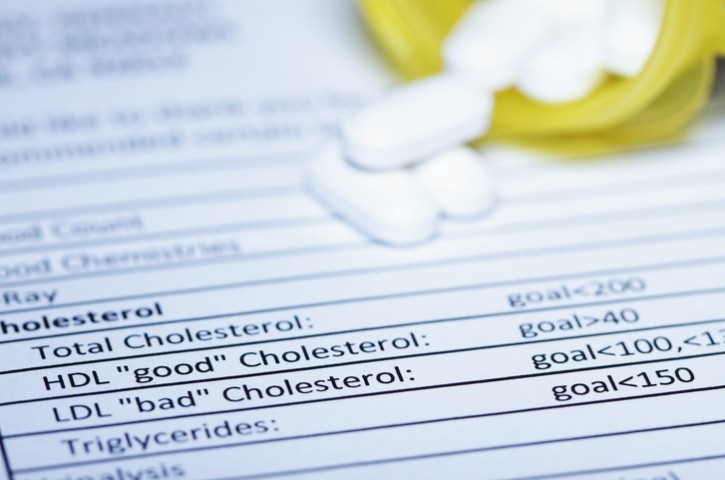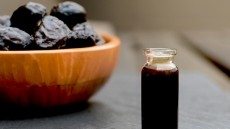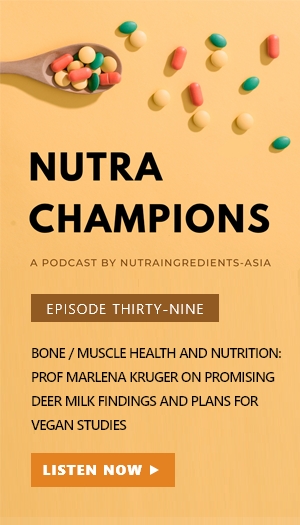'Good prospect': Probiotics can benefit patients on statins for high cholesterol – RCT

Researchers in China conducted a randomised, double-blind, placebo-controlled clinical trial to assess the role of probiotics in the treatment of hyperlipidaemia, which is more commonly known as high cholesterol.
They found that probiotics optimise the gut microbiota structure and decreased harmful bacteria in patients. When used with atorvastatin, a widely prescribed statin for the treatment of hyperlipidaemia, probiotics can be beneficial for patients.
“Probiotics can influence the composition of gut microorganisms and increase their diversity and abundance in vivo. It is recommended to use probiotics combined with atorvastatin to treat patients with hyperlipidaemia,” wrote the researchers in Medicine.
Hyperlipidaemia is characterised by excess triglycerides or lipids (fats) in the blood. It is a high-risk factor and symptom of arteriosclerosis and cardiovascular disease. Its main features include high total cholesterol (TC), high LDL-C (low-density lipoprotein cholesterol), high triglycerides (TG), and low HDL-C (high-density lipoprotein cholesterol).
Clinical studies have confirmed that gut imbalance in patients with hyperlipidaemia is mainly manifested as decreased dominant bacteria, such as Lactobacillus and Bifidobacterium, and increased nondominant bacteria, such as Bacteroides and Enterococcus.
Human and animal studies have shown that probiotics could reduce the lipid contents of TC, TG and LDL-C, and improve gut microecological balance in the host.
Researchers have also observed that human hosts can get more benefits from compound probiotics than single probiotic strains. To provide evidence for the clinical use of probiotics in the treatment of hyperlipidaemia, the researchers conducted a randomised, double-blind, placebo-controlled clinical trial to assess the effects of the compound strains Lactobacillus casei Zhang, Bifidobactetium animalis subsp. lactis V9, and Lactobacillus plantarum P-8 on the body. The purpose was to observe how compound probiotics alters gut microbiota in patients with hyperlipidaemia and explore the relationship between intestinal flora and blood lipid changes.
The study
Patients from the Inner Mongolia People’s Hospital were recruited for the trial, which took place from January 2019 to December 2019. All 33 patients had hyperlipidaemia with no other significant medical conditions and were between 45 to 66 years old.
The participants were randomly divided into a probiotic group and a control group. The probiotic group was given compound probiotics (2 g once daily) and atorvastatin 20 mg (once daily). The compound probiotics contained three different strains, including L casei Zhang, 3 × 106CFU/g; B animalis subsp. Lactis V9, 4 × 106CFU/g; and L plantarum P-8, 3 × 106CFU/g.
The control group was administered a placebo (2 g once daily) and atorvastatin 20 mg (once daily).
Both groups of drugs had blank packaging with the same appearance, and digital numbers were used to distinguish the different drugs.
Physical examination that included height, weight, and waist circumference, as well as evaluation of blood pressure and plasma lipid levels were conducted every month. Serum and fecal samples were also gathered for analyses.
The effects of probiotics on blood lipids was investigated by assessing the levels of TC, TG, and LDL-C.
Results and implications
The researchers found that the probiotic group had higher gut microbial abundance than the control group after three months. Significant variances were also observed in the gut microbiome between the two groups, indicating that probiotics can enhance gut microbe diversity and abundance in the host.
“Both the control and probiotic groups showed downregulated TC, TG, and LDL-C at months 1, 2, and 3 in contrast to month 0,” said the researchers.
“To some extent, probiotics can optimise gut microbiota composition and reduce harmful bacterium quantity in patients with hyperlipidaemia.”
The gut microbiota comprises four broad categories or phyla: Firmicutes, Bacteroidetes, Actinobacteria, and Proteobacteria, among which Firmicutes and Bacteroidetes are the dominant. This study showed that in the probiotics group, there were significantly reduced relative abundance of Proteobacteria and elevated Tenericutes. Tenericutes are not the dominant phylum in the gut, but they contribute to the diversity of the gut microbiome. The probiotics and control groups showed no obvious differences for Firmicutes, Bacteroidetes, and Actinobacteria.
“Time had a significant effect on the total cholesterol (TC), triglycerides (TG), and low-density lipoprotein-cholesterol (LDL-C) levels in the probiotic and control groups. The gut microbial abundance in the probiotic group was markedly higher than that in the control group following 3-month probiotic treatment. At the phylum level, probiotics exerted no notable effects on the relative abundance of Firmicutes, Bacteroidetes, and Actinobacteria but elevated that of Tenericutes and reduced Proteobacteria,” said the researchers.
This study also showed that probiotics treatment with the Bifidobacterium and Lactobacillus strains can regulate the abundance of various gut microorganisms at the genus level, including the less dominant strains such as Escherichia, Eggerthella, and Sutterella. The majority of human probiotic microorganisms fall into five genera (lower and more specific categories than the phyla), which include Lactobacillus, Bifidobacterium, Lactococus, Streptococcus, and Enterococcus. Currently, the most used probiotics are Lactobacillus and Bifidobacterium. Lactobacillus curbs the excessive growth of various pathogens such as group B Streptococci, Escherichia coli, and S aureus. Bifidobacterium helps other good bacteria grow by making the gut environment more acidic. It also boosts how the intestines process fats, which can combat obesity caused by a high-fat diet.
“At the genus level, probiotics increased the relative abundance of Bifidobacterium, Lactobacillus, and Akkermansia, and decreased that of Escherichia, Eggerthella, and Sutterella relative to the control group in months 1, 2, and 3,” said the researchers, who explained that Akkermansia, another genus of probiotic microorganism, contributes to the decrease of fat accumulation by lowering both liver and serum cholesterol levels, while Escherichia and Sutterella have been detected in elevated relative abundance within high-fat diet-fed rats in previous research.
This study therefore shows that probiotics can influence the composition of gut microorganisms and increase their diversity and abundance in the human host. Based on these findings, the researchers recommend combining probiotics with atorvastatin to treat patients with hyperlipidaemia.
“In conclusion, probiotics have good application prospects for the treatment of hyperlipidaemia. However, different probiotic strains and animal models need to be used to conduct more long-term animal experiments and large-sample, multi-centre clinical trials. This will help to further standardise and confirm the efficacy of probiotics in clinical applications, and to confirm the legitimacy of probiotic lipid-lowering therapy scientifically,” said the researchers.
Source: Medicine
DOI: https://doi.org/10.1097/MD.0000000000037883
“Probiotics combined with atorvastatin administration in the treatment of hyperlipidemia: A randomized, double-blind, placebo-controlled clinical trial”
Authors: Tian, Yingjie; Wu, Guang et al.



















